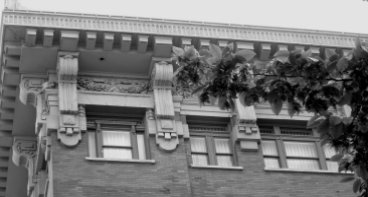
The Tacoma Landmarks Preservation Commission uses several sets of standards and guidelines to evaluate the appropriateness of proposed changes to historic buildings.
In general, these guidelines are intended to prevent the removal or destruction of historically important architectural elements and materials, to ensure that additions are compatible with the character of a historic property, and to ensure that alterations are reversible should a future restoration seek to undo the alterations.
The guidelines include:
Secretary of the Interior's Standards and Guidelines for Rehabilitation of Historic Buildings
First published in 1976 by the National Park Service, the Secretary of the Interior's Standards and Guidelines for Rehabilitation of Historic Buildings are the primary basis for reviewing changes to historic properties.
The Standards are to be applied to specific rehabilitation projects in a reasonable manner, taking into consideration economic and technical feasibility.
- A property shall be used for its historic purpose or be placed in a new use that requires minimal change to the defining characteristics of the building and its site and environment.
- The historic character of a property shall be retained and preserved. The removal of historic materials or alteration of features and spaces that characterize a property shall be avoided.
- Each property shall be recognized as a physical record of its time, place, and use. Changes that create a false sense of historical development, such as adding conjectural features or architectural elements from other buildings, shall not be undertaken.
- Most properties change over time. Those changes that have acquired historic significance in their own right shall be retained and preserved.
- Distinctive features, finishes and construction techniques or examples of craftsmanship that characterize a property shall be preserved.
- Deteriorated historic features shall be repaired rather than replaced. Where the severity of deterioration requires replacement of a distinctive feature, the new feature shall match the old in design, color, texture, and other visual qualities and, where possible, materials. Replacement of missing features shall be substantiated by documentary, physical, or pictorial evidence.
- Chemical or physical treatments, such as sandblasting that cause damage to historic materials shall not be used. The surface cleaning of structures, if appropriate, shall be undertaken using the gentlest means possible.
- Significant archaeological resources affected by a project shall be protected and preserved. If such resources must be disturbed, mitigation measures shall be undertaken.
- New additions, exterior alterations or related new construction shall not destroy historic materials that characterize the property. The new work shall be differentiated from the old and shall be compatible with the massing, size, scale, and architectural features to protect the historic integrity of the property and its environment.
- New additions and adjacent or related new construction shall be undertaken in such a manner that if removed in the future, the essential form and integrity of the historic property and its environment would be unimpaired.
For illustrated examples of the application of the Secretary of the Interior's Standards, please visit The National Park Service interactive rehab yes/no learning program.
Preservation Briefs
Preservation Briefs (PBs) are easy-to-read reports that provide guidance for preserving, rehabilitating, and restoring historic buildings.